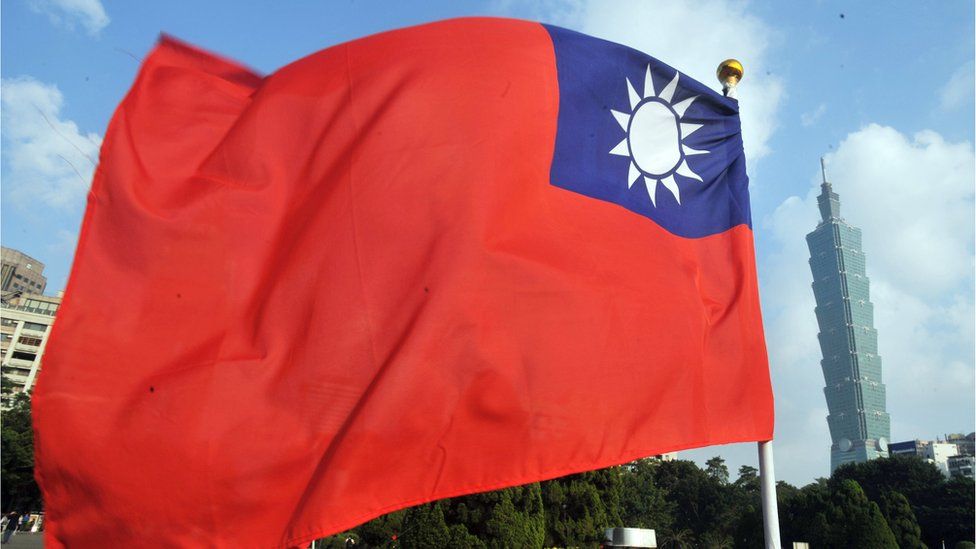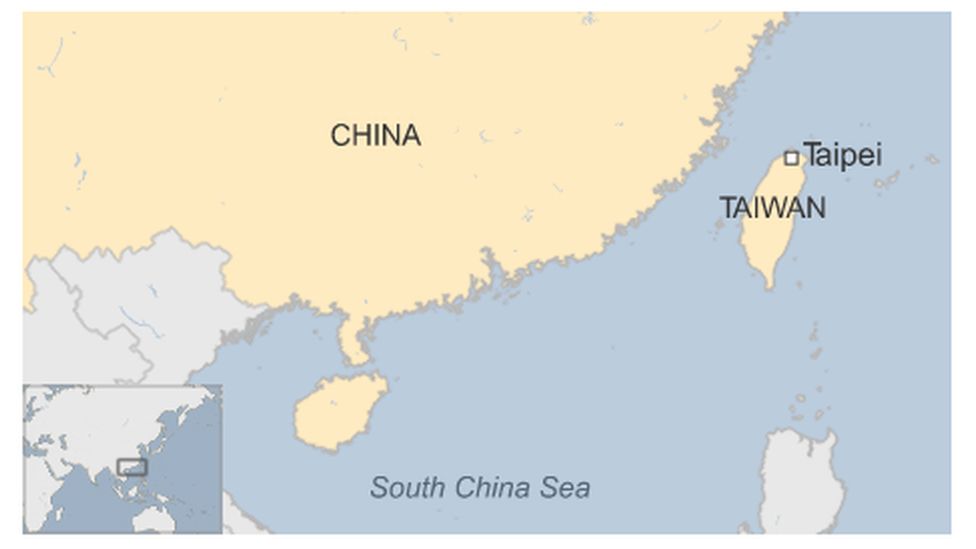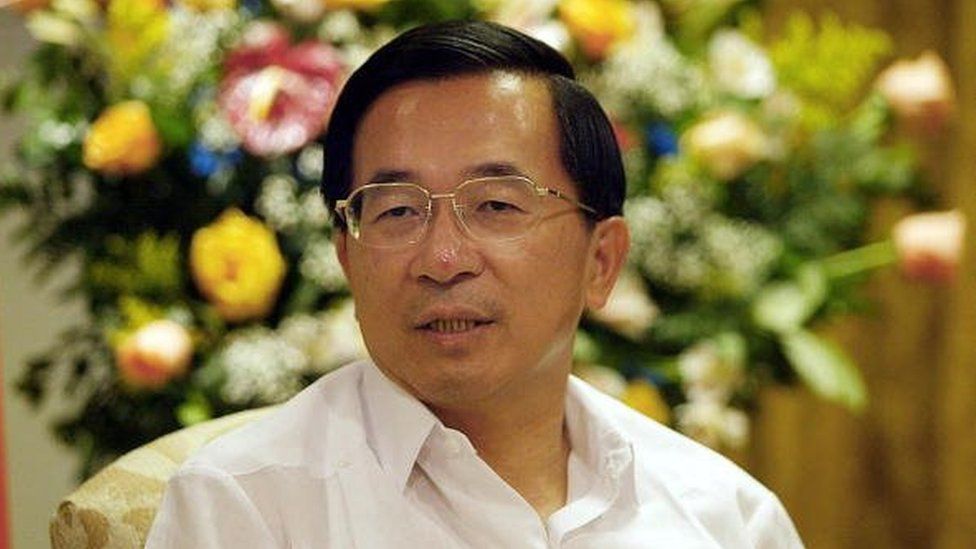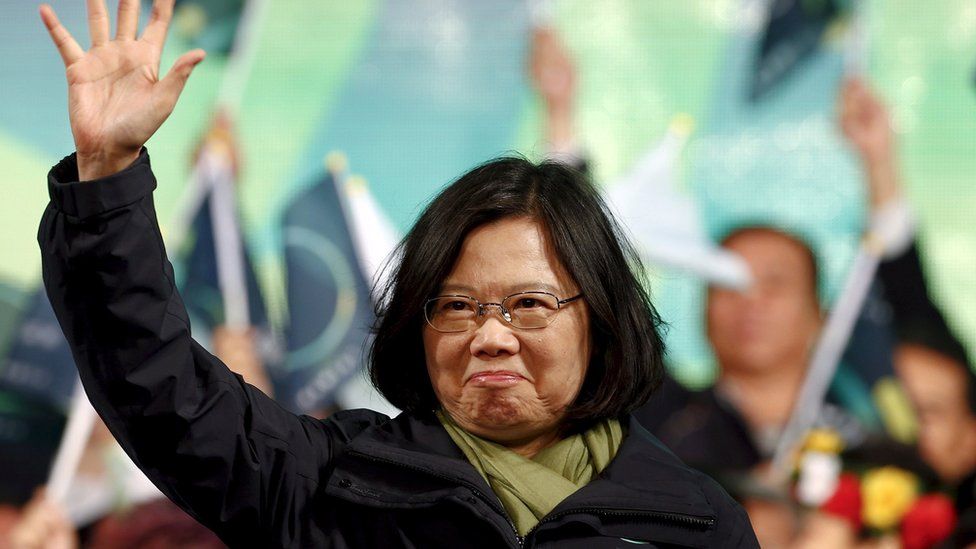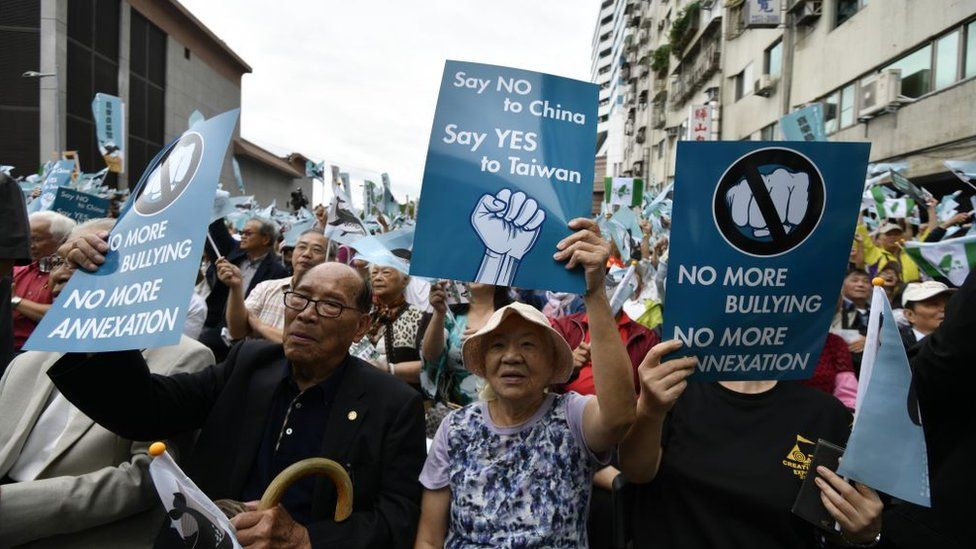The Chinese Government sees Taiwan as a breakaway province that will eventually be part of the country again.
29 January 2021
The Chinese Government sees Taiwan as a breakaway province that will eventually be part of the country again.
While some Taiwanese think this might happen in the future, others now feel that they already effectively have a separate nation whether or not independence is ever officially declared.
The dispute with China has left relations frayed with a constant threat of a violent flare up that could drag the US into the fray.
What is the history and source of this tension?
The first known settlers in Taiwan are Austronesian tribal people thought to have come from modern day southern China.
The island first appears in Chinese records in AD239, when China sent an expeditionary force to explore - a fact Beijing uses to back its territorial claim.
After a brief spell as a Dutch colony (1624-1661) Taiwan was administered by China's Qing dynasty from 1683 to 1895.
From the 17th Century, significant numbers of migrants started arriving from China, often fleeing turmoil or hardship. Most were Hoklo Chinese from Fujian (Fukien) province or Hakka Chinese, largely from Guangdong. The descendants of these two migrations now make up by far the largest population group.
In 1895, following Japan's victory in the First Sino-Japanese War, the Qing government had to cede Taiwan to Japan. After World War Two, the Republic of China - one of the victors - began ruling Taiwan with the consent of its allies the US and UK, after Japan surrendered and relinquished control of territory it had taken from China.
However in the next few years, a civil war broke out in China and the leader at the time Chiang Kai-shek's troops were beaten back by the Communist armies under Mao Zedong.
Chiang and the remnants of his Kuomintang (KMT) government fled to Taiwan in 1949. This group, referred to as Mainland Chinese and then making up 1.5m people, dominated Taiwan's politics for many years, even though they only account for 14% of the population.
Having inherited an effective dictatorship, facing resistance from local people resentful of authoritarian rule, and under pressure from a growing democracy movement, Chiang's son, Chiang Ching-kuo, began allowing a process of democratisation, which eventually led to the 2000 election of the island's first non-KMT president, Chen Shui-bian.
Where are things at now?
Relations between China and Taiwan started improving in the 1980s. China put forward a formula, known as "one country, two systems", under which Taiwan would be given significant autonomy if it accepted Chinese reunification.
This system was established in Hong Kong to be used as something of a showcase to entice Taiwanese people back to the mainland but over the last year it has come under massive pressure with many analysts already questioning whether it still exists in the city.
In Taiwan, the offer was rejected, but Taipei did relax rules on visits to and investment in China. It also, in 1991, proclaimed the war with the People's Republic of China on the mainland to be over.
There were also limited talks between the two sides' unofficial representatives, though Beijing's insistence that Taiwan's Republic of China (ROC) government is illegitimate prevented government-to-government contact.
Beijing became alarmed in 2000, when Taiwan elected as president Chen Shui-bian, who had openly backed "independence".
Mr Chen was re-elected in 2004, prompting China to pass a so-called anti-secession law in 2005, stating China's right to use "non-peaceful means" against Taiwan if it tried to "secede" from China.
In 2008, Ma Ying-jeou was elected president. He sought to improve relations with China, mainly through economic agreements.
In elections in January 2016, Tsai Ing-wen defeated Kuomintang party candidate Eric Chu. She leads the Democratic Progressive Party (DPP), which leans towards eventual official independence from China.
After Donald Trump won the 2016 US election, she spoke to the president-elect in a phone call, in what was a break with US policy set in 1979 when formal relations were cut. Despite the lack of formal relations, the US has an agreement to supply Taiwan with defensive weapons and has stressed any any attack by China would cause "grave concern".
Throughout 2018, China stepped up pressure on international companies forcing them to list Taiwan as a part of China on their websites and threatening to block them for doing business in China if they failed to comply.
In 2020, Ms Tsai won a second term. By that time, Hong Kong had seen months of unrest with protesters demonstrating against the mainland's increasing influence - a trend that had many in Taiwan worried Beijing would next set its eyes on Taiwan.
Later that year, China's implementation of a national security law in Hong Kong was seen by many as a yet another sign that Beijing was becoming significantly more assertive in the region.
In the meantime, the US has been intensifying its outreach to Taiwan, reassuring Taipei of its continued support,
In September, Washington sent its highest-ranking politician to hold meetings on the island for decades.
Beijing strongly criticised the meeting, warning "not to send any wrong signals to 'Taiwan independence' elements to avoid severe damage to China-US relations". During the controversial visit, China conducted a live-fire military exercise in the waterway that separates the island from the mainland.
President Joe Biden's administration has said its commitment to Taiwan is "rock solid".
In the first few days of Mr Biden's presidency, Taiwan reported a "large incursion" by Chinese warplanes over two days. Taiwan's air force moved to warn away the Chinese aircraft and deployed air defence missile systems to monitor the planes. Analysts said China was testing Mr Biden's support for Taiwan.
Pentagon spokesman John Kirby responded by saying: "We have obligations to assist Taiwan with their self-defence and I think you're going to see that continue."
So what is Taiwan?
There is disagreement and confusion about what Taiwan is, and even what it should be called.
China regards Taiwan as a breakaway province which it has vowed to retake, by force if necessary. But Taiwan's leaders say it is clearly much more than a province, arguing that it is a sovereign state.
It has its own constitution, democratically-elected leaders, and about 300,000 active troops in its armed forces.
Chiang Kai-shek's Republic of China (ROC) government, which fled the mainland to Taiwan in 1949, at first claimed to represent the whole of China, which it intended to re-occupy. It held China's seat on the United Nations Security Council and was recognised by many Western nations as the only Chinese government.
But in 1971, the UN switched diplomatic recognition to Beijing and the ROC government was forced out. Since then the number of countries that recognise the ROC government diplomatically has fallen drastically to about 15.
Given the huge divide between these two positions, most other countries seem happy to accept the current ambiguity, whereby Taiwan has virtually all of the characteristics of an independent state, even if its legal status remains unclear.
How much of an issue is independence in Taiwan?
While political progress has been slow, links between the two peoples and economies have grown sharply. Taiwanese companies have invested about $60bn (£40bn) in China, and up to one million Taiwanese now live there, many running Taiwanese factories.
Some Taiwanese worry their economy is now dependent on China. Others point out that closer business ties makes Chinese military action less likely, because of the cost to China's own economy.
A controversial trade agreement sparked the "Sunflower Movement" in 2014 where students and activists occupied Taiwan's parliament protesting against what they call China's growing influence over Taiwan.
Officially, the Democratic Progressive Party (DPP) still favours eventual formal independence for Taiwan, while the KMT favours eventual re-unification. Opinion polls show only a small minority of Taiwanese support pursuing one or the other at the moment, with most preferring to stick with the current middle ground.
Yet more and more people say they feel Taiwanese rather than Chinese. Support for the DPP increased at the January 2016 election. This was partly because of dissatisfaction with the KMT's handling of economic matters, from the wealth gap to high housing prices, and partly because of worries that Mr Ma's administration was making Taiwan too dependent on Beijing. What's behind the China-Taiwan divide?
